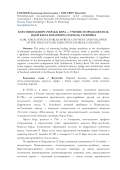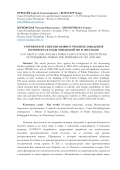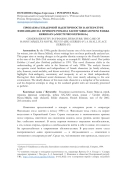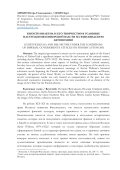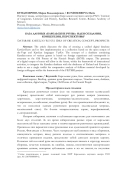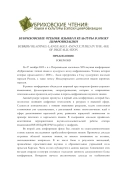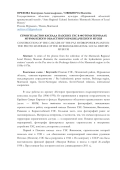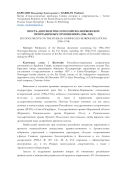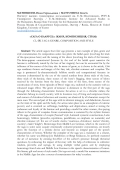The article argues that Clári saga presents a rare example of plot, genre and style contamination. Its composition unites two plots: the bridal quest (involving the trials of the eponymous hero) and the taming of the shrew (involving the trials of the heroine). The latter appears unmotivated (because by the end of the bridal quest narrative the heroine is sufficiently tamed by the loss of her virginity) but can be accounted for by the influence of the canons of the fairy tale. In terms of genre, as is shown in the article, Clári saga combines themes and images of the fairy tale, chivalric romance and exemplum. The saga is permeated by characteristically folklore motifs and compositional features: its structure is determined by the use of the sacred number three (three trials of the hero, three trials of the heroine, three scenes of the hero’s flogging, three scenes of blows received by the heroine from the hero, three visits of the hero, three scenes of the construction of tents, three episodes of Perus’ reign etc), endowed in the narrative with an enhanced magic effect. The genre of romance is dominant in the first part of the saga through the following characteristic features: the action is set in a chivalric milieu; the characters belong to courtly society, with its luxurious way of living and sumptuous feasts; and canons of chivalrous behaviour and courtesy are observed by all characters except the main ones. The second part of the saga with its inherent misogyny and didacticism, focuses on the trials of the spirit and the body, the action takes place in an atmosphere of extreme poverty and is centered on sufferings, hardships and deprivations, aimed at testing the endurance and loyalty of the heroine and providing a model for other women, thus paying tribute to the genre of exemplum. Genre contamination is sustained by the stylistic features of the saga, characteristic of exempla (‘learned’ style, Latinised syntactic constructions, Latin borrowings), folklore (proverbs, repetitions, parallelisms, an emphasis on numerals) and chivalric romance (cf. the use of words: kurteiss ‘courteous, chivalrous’, kurteisi ‘chivalry, courtesy’, riddari ‘knight’). Borrowings from Middle Low German, which in the context of the saga in some cases acquire emotionally coloured pejorative connotations, are mostly given the function of a stylistic device and become an integral part of the speech characteristics of heroes. Whether the compiler of the saga was a translator or a creator, whether his name was Bishop Jón Halldórson or Bergr Sokkason, he perfectly mastered the art of narration: by creating the effect of the author’s presence through rhetorical questions, by enhancing the impact of the story with the help of references to collective wisdom, proverbs and sayings, by using multiple verbal games and by employing borrowings from Latin and Middle Low German in the speech characterisation of heroes. His literary gift and sense of style made Clári saga not only a model for numerous imitations in the Middle Ages but also a source of entertainment for today’s readers.
